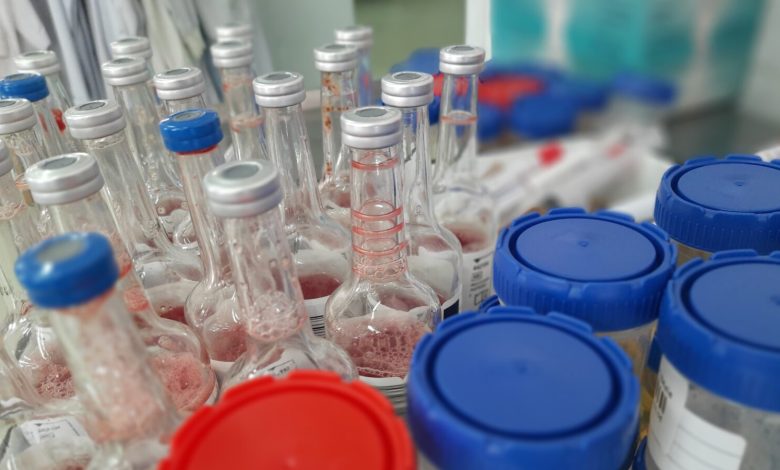Hospitals, labs, and health departments try to cope with blood culture bottle shortage

The nation’s hospitals are suffering from a major blood culture bottle scarcity. Blood culture bottles are essential for identifying dangerous and occasionally fatal bloodstream diseases.
Health care providers, laboratory experts, administrators of healthcare facilities, and state, tribal, local, and territorial health departments received a notice from the Centers for Disease Control and Prevention on Tuesday informing them of the scarcity of Bactec blood culture medium bottles, which are sold by Becton Dickinson. Hospitals have been informed that the shortfall, which has been ongoing for weeks, may continue until September.
As an infectious diseases specialist and spokesman for the Infectious Diseases Society of America, Krutika Kuppalli told STAT via email that the blood culture bottles are a fundamental component of a healthcare provider’s effort to identify the cause of a bloodstream infection and determine the best course of treatment. Bacteria that cause bloodstream infections include Staphylococcus aureus.
“Patients may continue on broad antibiotics, increasing the risk of antibiotic resistance and Clostridium difficile-associated diarrhea, if pathogens cannot be identified or their susceptibility to specific antibiotics cannot be determined,” Kuppalli stated. “Shortages may also deter people from requesting blood cultures, which could result in the treatment of infections going untreated.”
Speakers from hospitals affected by the shortage discussed the effects of the supply deficit in a Zoom webinar that was organized by the CDC and the IDSA. Some universities might run out of the bottles completely, according to several warnings. Ten vials were included in the package that Romney Humphries, the medical director of the microbiology lab at Nashville’s Vanderbilt University Medical Center, claimed her 1,700-bed hospital received this week.
“Patients are not benefiting from this situation,” she stated.
On the call, Humphries and other experts discussed the efforts hospitals are making to safely decrease the quantity of blood culture tests they perform in order to preserve vital supplies. These efforts include determining whether or not expired bottles can be used safely and prohibiting repeat cultures within 48 hours unless they are absolutely necessary. According to her, the hospital’s implementation of stewardship measures towards the end of June has resulted in a 58% decrease in the utilization of the limited blood culture bottles.
Hospitals need to get back to best practices, according to Sarah Turbett, associate director of clinical microbiology laboratories at Massachusetts General Hospital in Boston. She urged staff not to order needless tests. She mentioned that some hospitals have already implemented test rationing and that other institutions will need to consider doing the same.
According to Turbett, her team tested some BD blood culture bottles that were approximately 100 days past their expiration date to see if they could still detect pathogens with the same efficacy as bottles that hadn’t expired. They found that there was no difference in the expired bottles’ time to bacterial growth, which is necessary to identify the source of an infection, as opposed to the non-expiration date. She claimed that a recent letter published in the Journal of Clinical Microbiology and Infection, which revealed blood culture bottles remained viable for four to seven months after expiration, served as the impetus for the work. The European scientists’ letter was based on an investigation into a distinct brand of blood culture bottles.
However, a Food and Drug Administration representative was unable to respond right away when callers inquired about whether the agency would permit the use of outdated blood culture bottles.
With regard to this and other usage-reducing measures hospitals are implementing to try to get through this scarcity, Turbett stated, “The reality of the situation is you can’t let perfect be the enemy of good.”
The meeting was informed by Chris Beddard, vice president of microbiology at BD, that the business only purchases Bactec blood culture bottles from one source. She claimed that for BD’s benefit, the supplier—whom she did not identify—has consistently produced the product for 12 years.
According to Andrew Pavia, head of pediatric infectious diseases at the University of Utah, blood cultures are performed in several situations, some of which are needless, as STAT was emailed. However, in certain cases, the secret to a successful treatment plan is understanding the origin of a bloodstream infection and the medicines that will work on it.
Blood cultures are frequently taken for certain conditions—such as simple community-acquired pneumonia or skin infections—despite recommended guidelines, although they don’t really offer anything. However, it will be crucial to take blood cultures from sepsis patients, those who are probably going to have bloodstream infections, and really vulnerable patients, the doctor stated.
When asked if treating bloodstream infections could leave doctors flying blind, Pavia responded, “but the windscreen may be dirty,” indicating that he didn’t think that would be the case in most situations.
He said, “It will require consideration, care, and flexibility.” Naturally, if the shortfall turns out to be greater than anticipated, things could get even scarier.




